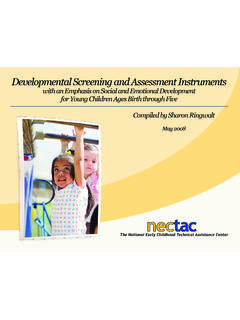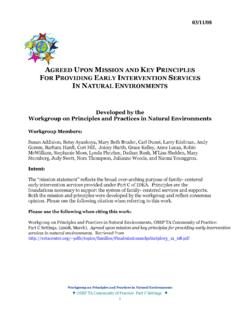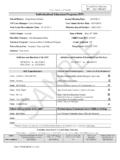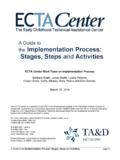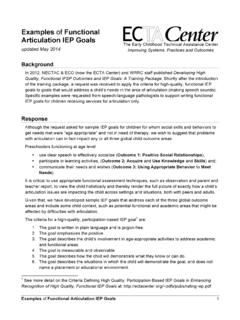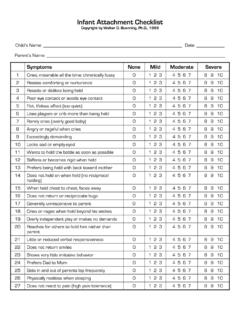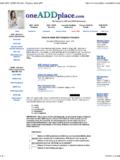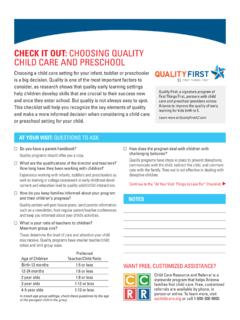Transcription of Child Social-Communication Interaction Checklist
1 Child Social-Communication Interaction ChecklistThis Checklist includes practices that can be used to encourage and promote nonverbal or verbal Child communication behavior by responding contingently (positively) to the Child s behavior. The Checklist includes a number of behavior, activities, etc., that can be used to be responsive to a Child s attempts to communicate with others and to engage a Child in interactive episodes that focus on enhancing Child communicative competence. The adult behavior can Please indicate which practice characteristics you were able to use as part of interactions with a Child :Seldomor Never(O-25%)Some of the Time(25-50%)As Often As I Can(50-75%)Most of the Time(75-100%)Notes1. Observe the Child s attempts to communicate or interact with you during everyday activities 2.
2 Identify the Social-Communication behavior the Child uses or attempts to use to initiate adult- Child interactions 3. Follow the Child s lead and interpret the Child s behavior ( , visual attention, smiling, gestures) as an attempt to communicate 4. Respond promptly and positively (contingently) to the Child s Social-Communication behavior to sustain the Child s interactions with you 5. Join in the Child s Social-Communication interactive play by imitating the Child s nonverbal and verbal behavior 6. Respond positively to the Child s social -communicative interactive behavior to encourage Child requests, preferences, or interests 7. Vary your responses to the Child s communicative behavior through modeling, feedback, and other prompting strategies to encourage Child expansions be used as part of all types of everyday activities and as part of adult- Child Checklist indicators can be used by a practitioner to develop a plan to use the practice with a Child or to promote a parent s use of the practice.
3 The Checklist rating scale can be used to do a self-evaluation to determine if the different practice characteristics were used by a practitioner with a Child or as part of promoting a family member s use of the : _____ Child : _____ Date: _____DEC Recommended Practices Topic Area: Interaction Checklist 2 of 4 See DEC RPs: INT 1, 2, 3, 4 The DEC Recommended Practices are available at this Checklist and other ECTA Center products at Copyright 2017 Early Childhood Technical Assistance Center
